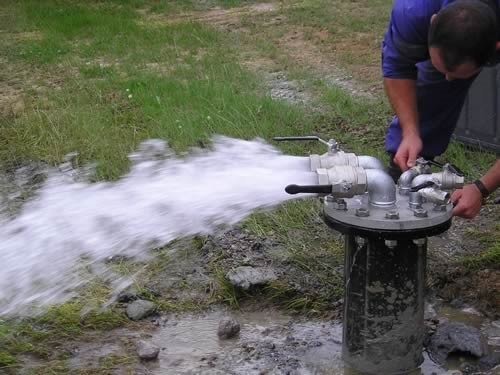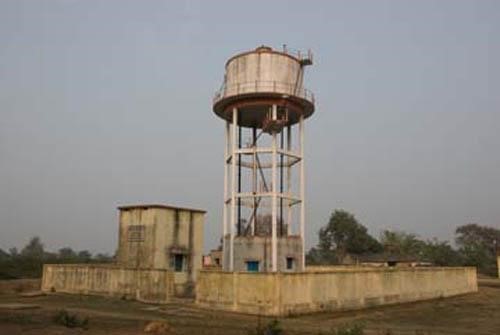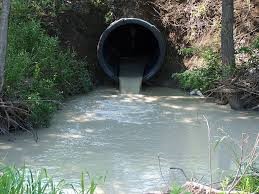
- Water and drainage
APEC Kolath has boreholes nearby from which they withdraw water for production and consumption in the offices and residential blocks. The company do not treat this water which ensures that costs are kept to a minimum. To ensure they have a constant supply of water the company has water storage tanks on site with direct feeds from the boreholes.
APEC Kolath considers that the water they abstract is their property as the boreholes are on their land. However, they do recognise the financial benefit they obtain as they do not have to pay for the water they consume and do not need to pay for water treatment. Because they own the boreholes there are no records of water usage kept. Complaints from local residents are ignored.
APEC Kolath has 2 water storage tanks on site that are automatically filled from the boreholes.

Figure 1: One of the 2 water storage tanks owned by APEC Kolath
Alternative sources of water have not been considered by APEC Kolath. The dormitories only have water from the boreholes pumped to their toilets. Water for drinking, cooking and washing is collected from water pumps in the factory yard. Some workers collect rainwater to wash clothes and water the plants grown alongside the dormitories.

Figure 2: Water is collected from a pump in the factory yard
Water used in the production processes is discharged to the lagoon and river about 1km from the factory. This contains varying quantities of oils, solvents and plastic residues. Recently a government official asked the company to take samples, and analyse them. They were sent a copy of the sample report.
At present APEC Kolath does not possess any drainage plans for site.

Figure 3: Waste water from production is discharged to a local lagoon